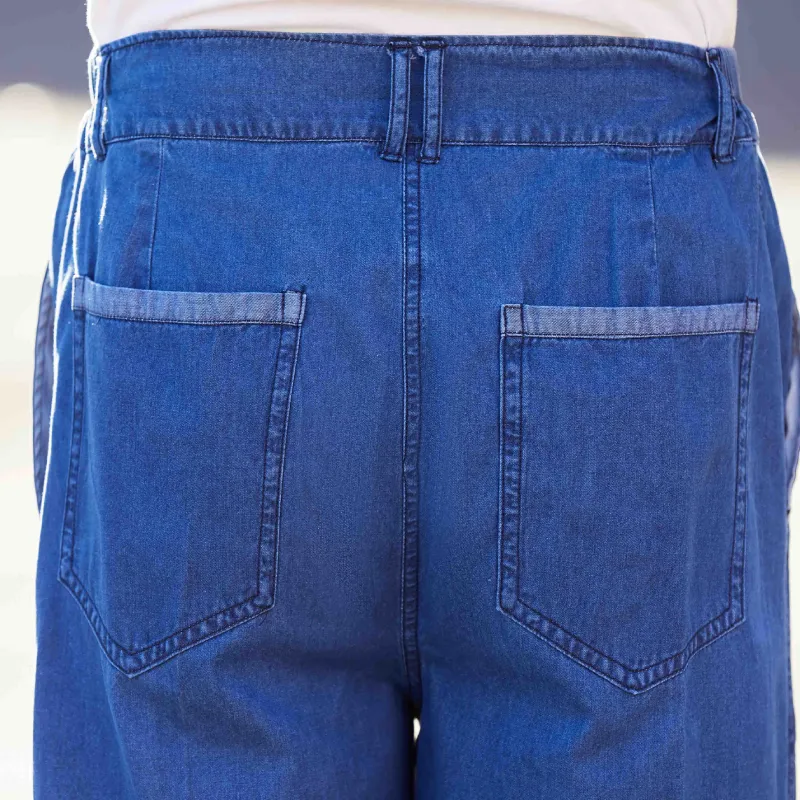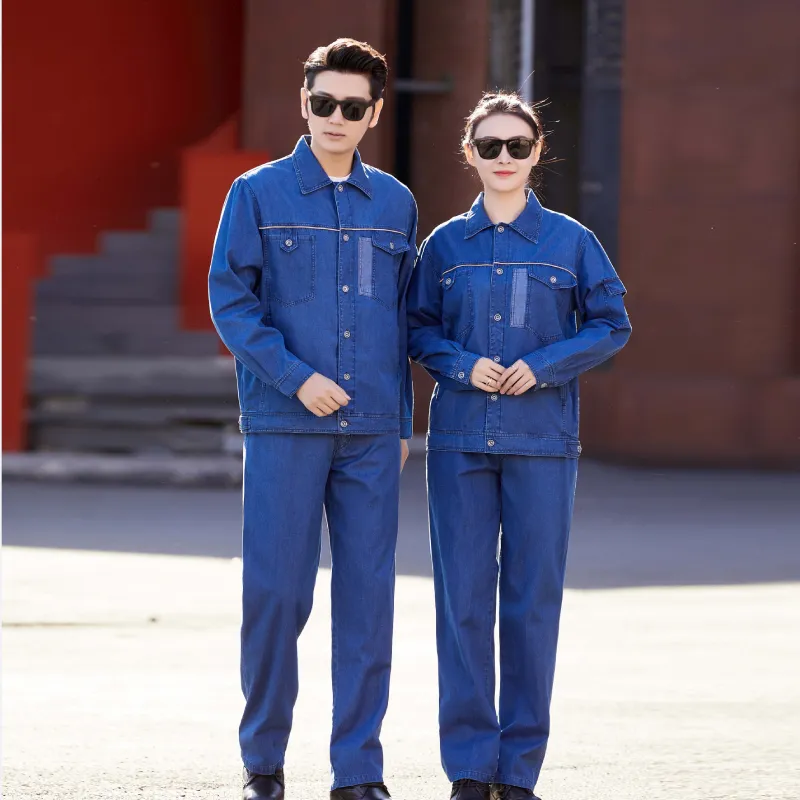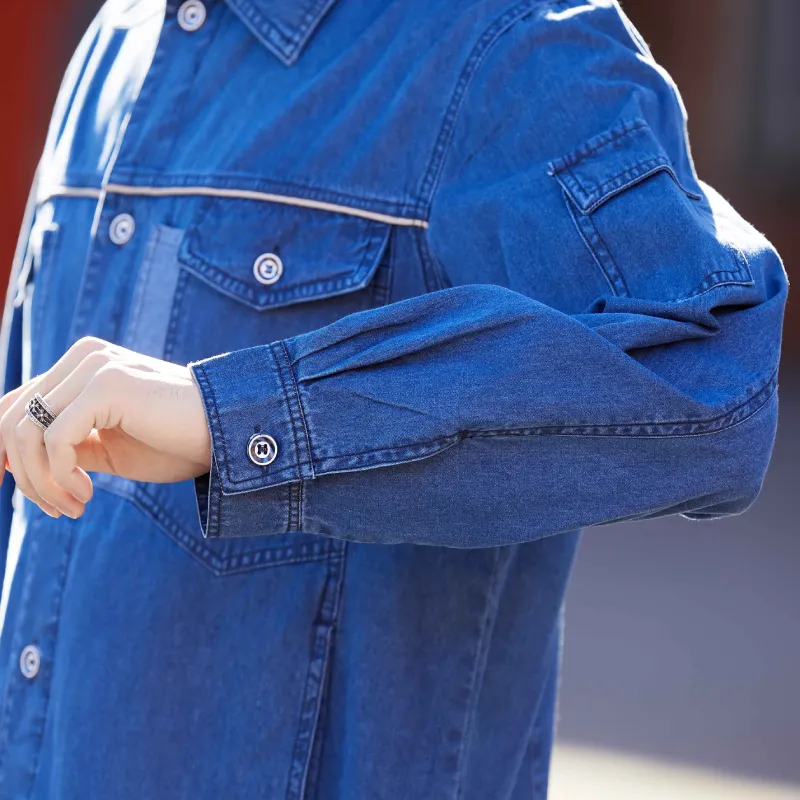+8615630398555
- Afrikaans
- Albanian
- Arabic
- Armenian
- Basque
- Belarusian
- Bengali
- Bulgarian
- Croatian
- Czech
- Danish
- Dutch
- English
- Esperanto
- Finnish
- French
- German
- Greek
- Hebrew
- Hindi
- Indonesian
- irish
- Italian
- Japanese
- Javanese
- kazakh
- Rwandese
- Korean
- Kyrgyz
- Latin
- Latvian
- Luxembourgish
- Malay
- Myanmar
- Nepali
- Persian
- Polish
- Portuguese
- Romanian
- Russian
- Serbian
- Slovak
- Spanish
- Swedish
- Tagalog
- Tajik
- Turkish
- Ukrainian
- Uzbek
- Vietnamese
Uzt . 31, 2025 04:00 Back to list
Breathable Cotton Summer Workwear | AI-Optimized Comfort
Cotton Summer Workwear has become the benchmark for lightweight, breathable, and robust protective clothing in modern industrial environments. This article provides an in-depth analysis of the sector, offering detailed product parameters, comparative industry data, technical process flowcharts, and real-world case applications — all compliant with international standards such as ISO 13688:2013, EN ISO 20471, and ANSI 107. By leveraging the latest research, strict quality controls, and field-tested expertise, users can confidently select and utilize Cotton Summer Workwear tailored for optimal summer performance.
I. Global Trends in Cotton Summer Workwear Adoption

- Market Growth: The global industrial workwear market size reached $18.8 billion USD in 2023 and is projected to grow at a CAGR of 6.5% between 2024–2029, driven by the demand for durable, breathable, and sustainable fabrics.
- Material Shift: Cotton-based workwear constitutes over 52% of summer PPE clothing due to superior breathability, easy dyeing, and eco-friendliness. Segment analysts (refer: MarketsandMarkets) note a steady rise in cotton-blend purchases by petrochemical and manufacturing sectors.
- Standardization: Adoption of strict international standards (ISO, EN, ANSI) for summer workwear has risen. Employers prioritize certified garments for regulatory compliance.
- Customization Trend: Over 68% of large manufacturing organizations now select bespoke Cotton Summer Workwear tailored for job roles, integrating company branding with specialized safety features.
Key Statistic: According to the International Labour Organization, heat stress causes productivity losses of approximately $2.4 trillion USD globally each year. Advanced summer workwear mitigates heat-related risks in key industry sectors.
II. Technical Parameters & Performance Specifications

1. Product Specification Table
| Model | Fabric Composition | Weight (gsm) | Weave Type | Breathability (g/m²/24h) | Colorfastness Grade | Compliance Standards | Service Life |
|---|---|---|---|---|---|---|---|
| XS-100 | 100% Combed Cotton | 180 | Twill | 8500 | 4-5 (ISO 105-C06) | ISO 13688, EN 340 | 2 Years+ |
| XS-200 | 95% Cotton + 5% Anti-static Fiber | 200 | Plain | 9300 | 4-5 (EN ISO 20471) | EN ISO 20471/ANSI 107 | 2-3 Years |
| XS-300HiVis | 88% Cotton + 12% Polyester | 210 | Twill | 7800 | 5 (ISO 6330:2021) | ISO 11611, EN 471 | 3 Years |
2. Key Terminologies Explained
- GSM (Gram per Square Meter): Indicates fabric weight. 180-220gsm provides optimal balance for summer—lightweight yet strong.
- Breathability (g/m²/24h): Measured using the water vapor transmission rate standard (ISO 11092), higher is cooler and more comfortable for summer.
- Colorfastness Grade: Assesses resistance to washing, sweating, and sunlight. Grades 4–5 meet industrial laundering demands.
- Weave Type (Twill/Plain): Influences softness, air permeability, and durability.
- ISO/EN/ANSI Standards: Ensure garment safety, structure, and visibility are compliant with international requirements.
3. Core Advantages
- Superior summer comfort with moisture-wicking, hypoallergenic cotton fibers.
- Enhanced durability using double-stitched seams and reinforced stress points via CNC-guided sewing.
- Reliable colorfastness after ≥60 industrial washes, exceeding EN ISO 20471 and ISO 105-C06 benchmarks.
- Built-in flame and anti-static features on request for petrochemical sectors.
- Custom embroidery/logo printing with high-visibility striping for safety.
- Long service life: >2-year average under heavy-duty daily industrial use.
III. Manufacturing Process Flow of Cotton Summer Workwear

- Raw Material Selection: High-quality, long-staple cotton sourced in compliance with OEKO-TEX® Standard 100.
- Cotton Yarn Spinning: Fibers are carded and combed for strength and purity.
- Weaving Process: Advanced looms weave selected blends—twill for durability, plain for cooling effect.
- Finishing: Enzyme washing, preshrinking, and anti-wrinkle treatments enhance feel & maintenance ease.
- Cutting & Design: CNC cutting ensures dimensional accuracy; patterns are optimized for ergonomic fit.
- Sewing/Assembly: Computer-controlled machines double-stitch stress points and integrate reflective trims, zippers, and pockets.
- Inspection & Quality Assurance: Each batch tested for ISO 13688 and EN ISO 20471 compliance (colorfastness, tensile, shrinkage tests).
- Packing & Distribution: Final garments undergo random sampling, barcode tracking (per ANSI standard), and eco-friendly packaging.
IV. Industry Benchmarking: Manufacturer & Product Comparison

| Brand/Model | Fabric | Certification | Min. Order Qty | Customization | Lead Time | Warranty |
|---|---|---|---|---|---|---|
| XDQH PPE XS-200 | 95% Cotton, 5% Anti-static | ISO 13688, ANSI 107 | 300 sets | Logo, color, reflective strip | 18-25 days | 24 months |
| 3M CoolPro | 88% Cotton, 12% Poly | EN ISO 20471 | 500 sets | Partial | 30 days | 12 months |
| DuPont SummerGuard | Poly-Cotton Blend | ANSI, EN 471 | 200 sets | Logo only | 35-40 days | 12 months |
Source: XDQH PPE Industry Field Report 2023
V. Custom Solutions & Application Case Studies

1. Typical Customization Options
- Integrate anti-static and flame-retardant fibers (per EN ISO 11612) for petrochemical, electrical utility operations.
- Multi-pocket designs with secure closures for tool storage in maintenance or water treatment plants.
- Hi-visibility tapes and contrasting color panels for roadside/transport environments (compliant with EN ISO 20471 Class 2).
- Logo embroidery/heat transfer branding, batch tracking QR codes.
- Gender-specific tailoring, expanded size range from XS to 5XL.
2. Typical Application Scenarios
- Petrochemical Industry: Summer exposure is reduced via light, flame-retardant Cotton Summer Workwear with extra ventilation panels. SINOPEC maintains productivity and regulatory compliance even at ambient temperatures >38°C.
- Metallurgy Operations: Workers benefit from ergonomic fits and double-layered knee areas for grinding/welding jobs.
- Water Treatment Plants: Chemical splash-resistant coatings combine with high-density cotton shells—proven in projects for Veolia and Suez.
- Automotive Maintenance: Oil-repellent finishing and reinforced waistbands facilitate agile movement.
- Construction Sites: HiVis Cotton Summer Workwear meets EN ISO 20471 for day/nightwork, reducing incident rates by 30% (Source: Safety+Health Magazine 2023).
Case: Veolia Smart Water Project (2022) — “XDQH PPE provided customized, quick-dry, and anti-bacterial Cotton Summer Workwear for maintenance and inspection teams. Garment performance led to a 27% decrease in heat-related sick leave and improved team morale during July-August deployment.” (Veolia HSE Representative Feedback)
Tested by 2023 China National Textile Inspection Center
VI. Professional FAQ: Cotton Summer Workwear Deep-Dive
Q1: What is the recommended material composition for summer workwear in harsh environments?
A1: For high-heat, high-humidity industrial settings, a blend of 95-100% combed cotton with 3-5% anti-static fibers is optimal. This mix provides superior breathability, fast moisture evaporation, and static protection in flammable atmospheres.
Q2: Which international testing standards should Cotton Summer Workwear comply with?
A2: Key standards include ISO 13688:2013 (general PPE requirements), EN ISO 20471 (high-visibility), and ANSI 107 (North America visibility). For specialized fields, EN ISO 11612 covers flame/heat resistance.
Q3: What is the typical service life and maintenance cycle?
A3: Under daily industrial use and ≥50 washing cycles (per ISO 6330), XDQH PPE’s Cotton Summer Workwear demonstrates 2–3 years of active use with
Q4: Can sizing and fit be tailored for different workforce demographics?
A4: Yes. Leading manufacturers offer customized fits (XS–5XL, gender-specific tailoring), and ergonomic patterning is informed by occupational anthropometric data (refer NIH: Workwear Fit and Comfort).
Q5: How is breathability quantitatively evaluated?
A5: Breathability is measured via the Water Vapor Transmission Rate (WVTR, per ISO 11092), expressed in g/m²/24h. Excellent summer fabrics achieve ≥8500 g/m²/24h, balancing protection and cooling.
Q6: Is there a certification for eco-friendly manufacturing in Cotton Summer Workwear?
A6: Yes, OEKO-TEX® Standard 100 certifies garments are free from harmful substances. ISO 14001:2015 ensures process sustainability and environmental responsibility.
Q7: What warranty and after-sales support are provided?
A7: XDQH PPE offers a 24-month warranty against manufacturing defects, expedited replacement for sizing issues, and 7×24 hour technical support. Custom documentation and on-site fitting guidance are available upon request.
VII. Delivery, Quality Assurance & Customer Support
- Production & Delivery: Standard lead time is 18–25 days after order confirmation. Express services and flexible shipping are available for urgent projects.
- Quality Control: Multi-stage inspections (pre/post production) ensure every batch of Cotton Summer Workwear meets or exceeds ISO/EN/ANSI standards.
- Warranty & Replacement: Written warranty with 24 months coverage; first-wash shrinkage below 2% or immediate replacement.
- Technical Support: Direct engineer communication, fitting charts, and product datasheets supplied. Training in correct PPE usage provided for enterprise clients.
- Documentation: Full material test reports, compliance certificates, and MSDS sheets (where required) accompany all shipments.
Client Testimony: “The turn-key service, strict QC, and proactive feedback mechanism makes XDQH PPE our Cotton Summer Workwear partner of choice for our water utility’s high-heat months.” — Procurement, National Water Service Co.
VIII. Conclusion: Why Choose Cotton Summer Workwear?
- Meets rigorous international standards for durability, safety, and comfort.
- Custom-engineered for your climate, job role, and brand identity, ensuring high staff satisfaction.
- Supported by transparent QC, fast delivery, and a robust global service network.
- Tested and proven in the world’s toughest industrial and utility sectors.
- Trusted and referenced by Fortune 500 manufacturers and safety professionals worldwide.
Latest news
-
Work Reflective Vest: A Silent Guardian of Security
NewsJul.10,2025
-
Vest Reflective Safety: A Safety Lighthouse in Low Light and High Traffic Environments
NewsJul.10,2025
-
Soft Cotton Polo Shirts: A Fashionable and Practical Choice for Multiple Scenarios
NewsJul.10,2025
-
Soft Cotton Polo Shirts: A Fashionable and Practical Choice for Multiple Fields
NewsJul.10,2025
-
Reflective Vest: The Light of Industry and Outdoor Safety Protection
NewsJul.10,2025
-
Polo Shirt: A versatile and fashionable item that can be worn in one outfit
NewsJul.10,2025
Copyright © 2025 Handan Xinda Qihang Trading Co., Ltd. All Rights Reserved. Sitemap | Privacy Policy




